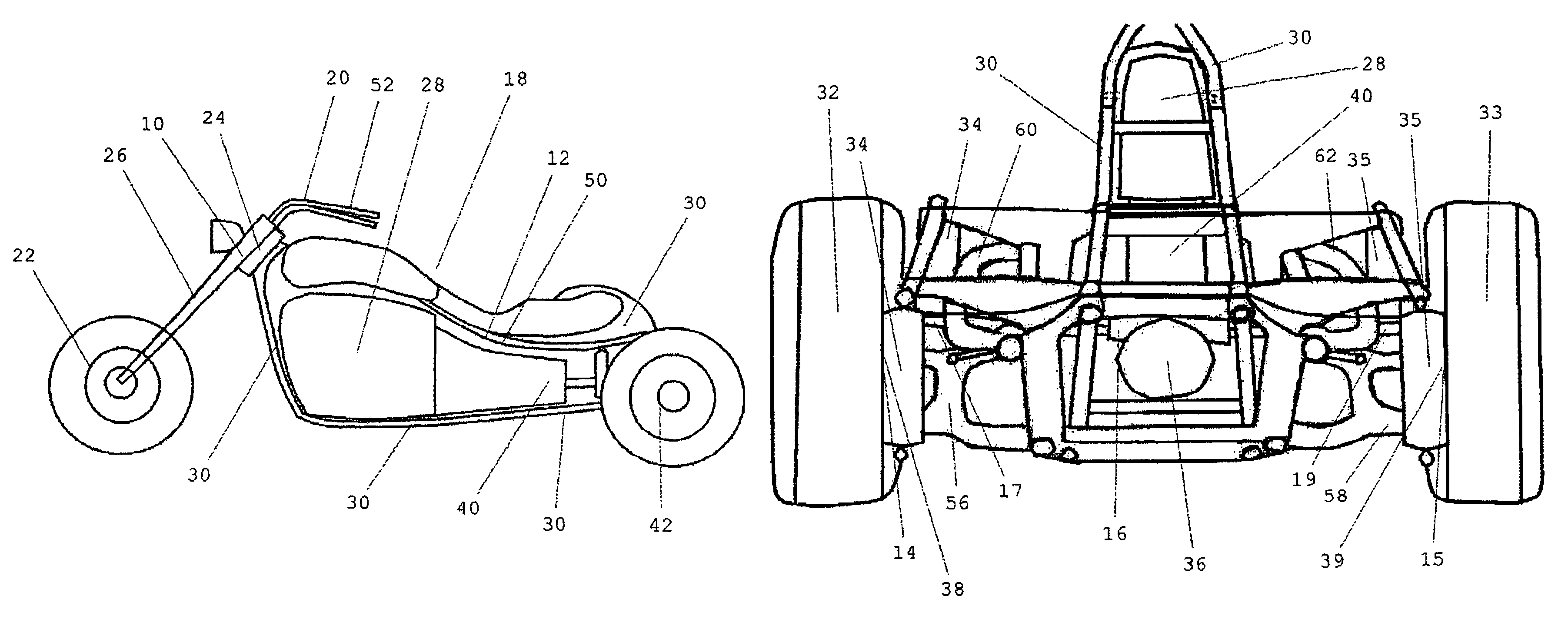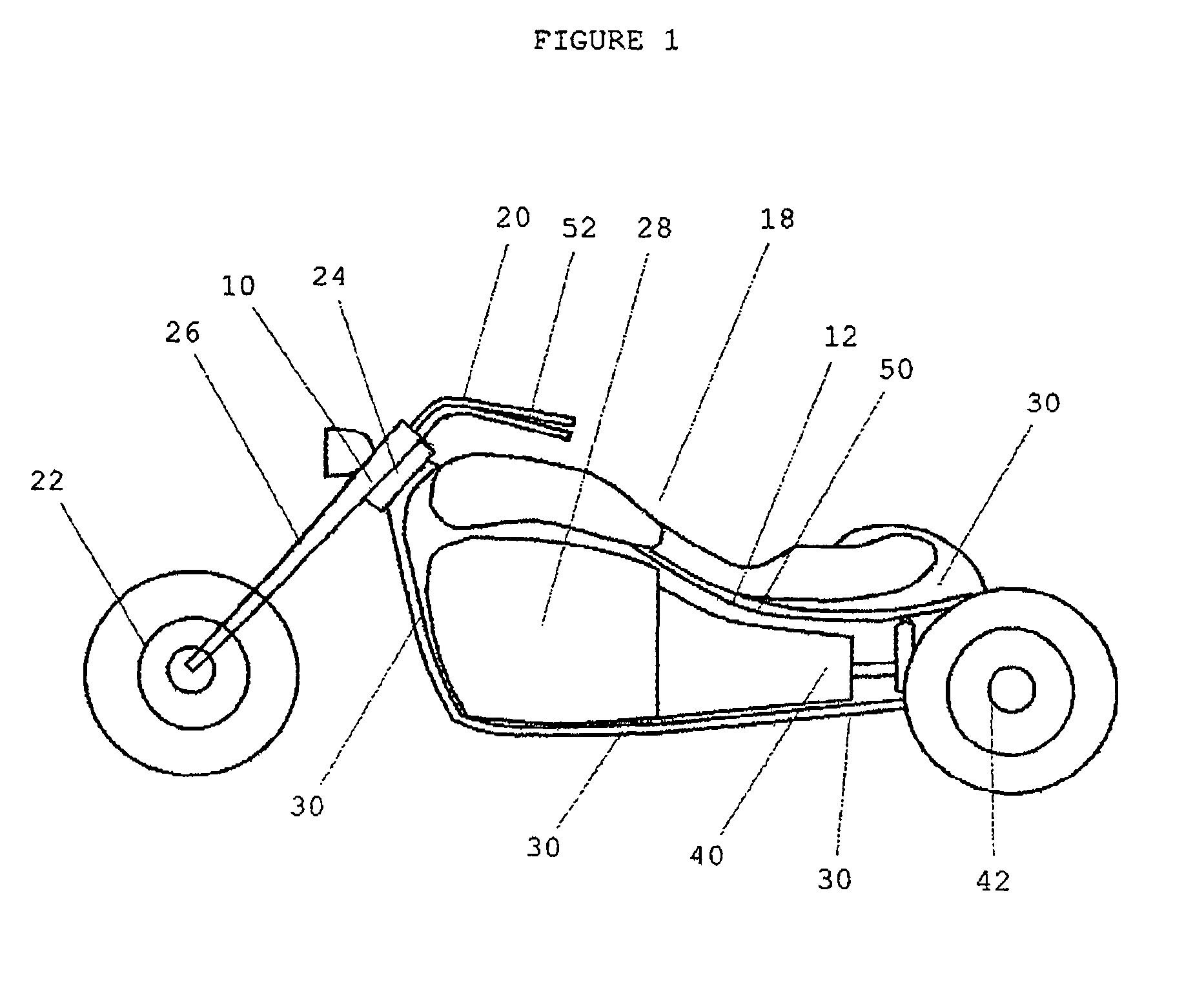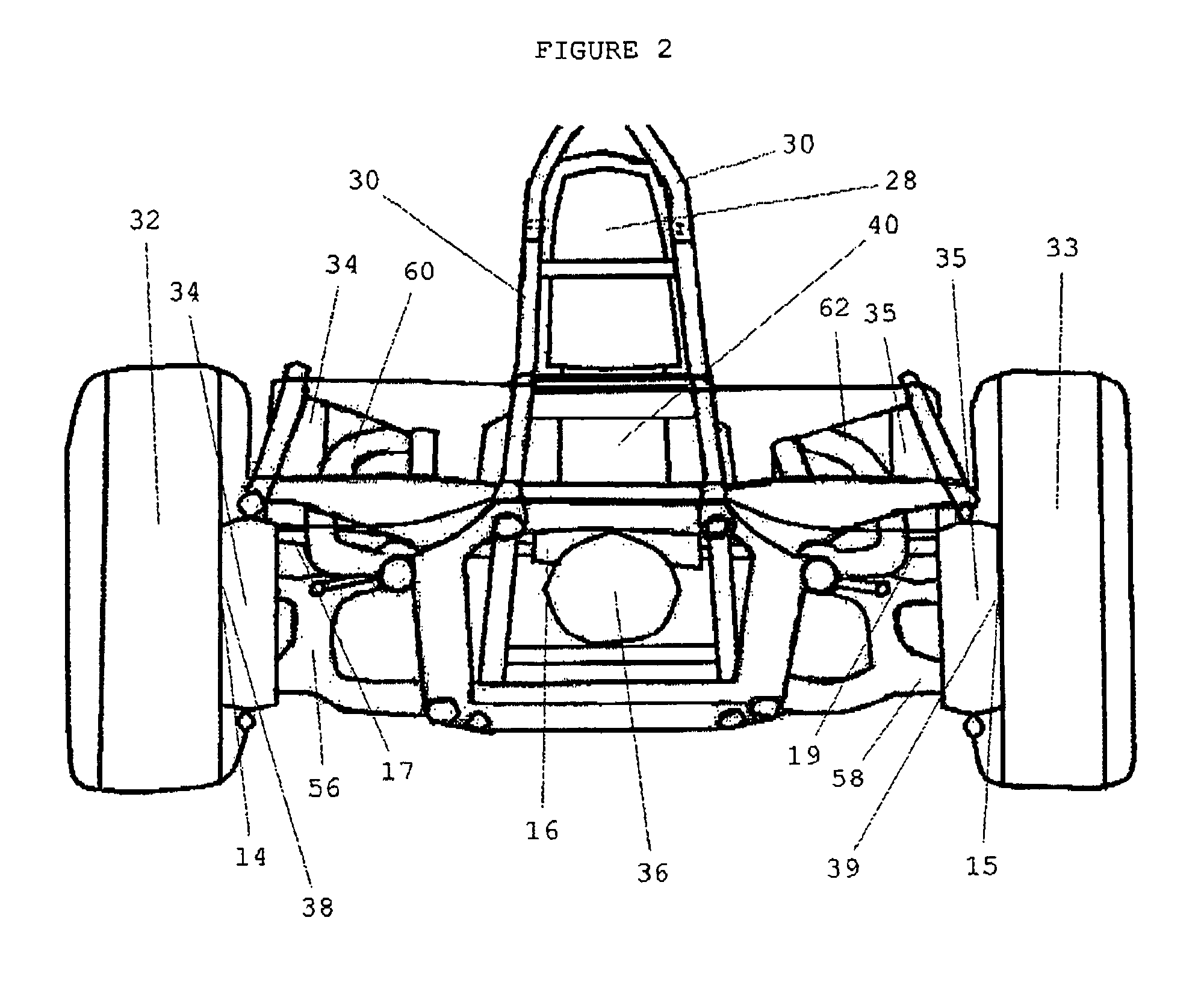Motorized three-wheeled vehicle rear steering mechanism
a three-wheeled vehicle and rear steering technology, which is applied in the direction of power steering, fluid steering, vehicle components, etc., can solve the problems of less stable condition, increased potential problems, and vehicle can roll, so as to improve handling, performance and safety, and facilitate the operator to turn. , the effect of reducing the turning radius
- Summary
- Abstract
- Description
- Claims
- Application Information
AI Technical Summary
Benefits of technology
Problems solved by technology
Method used
Image
Examples
Embodiment Construction
[0026]FIG. 1 is a left view of a complete motorized three-wheeled vehicle 18 with the body removed of the invention. A motorized three-wheeled vehicle 18 has a frame 30 which has steering neck 24 at the front end to which is mounted the front end assembly 26 at the bottom of which is mounted the front wheel assembly 22 and at the top is mounted the handlebars 20 that are used by the operator for the purpose of steering the vehicle.
[0027]FIG. 2 is a rear view of a motorized three-wheeled vehicle 18 as shown in FIG. 1. Power for vehicle movement is generated by a motor 28 which can be internal combustion, hybrid, electric or other power source and transmitted to the left rear wheel and tire assembly 32 and the right rear wheel and tire assembly 33 through the transmission 40 and rear end 36. Rear shock absorption is provided by the left rear shock absorbing unit 34 and the right rear shock absorbing unit 35 each of which can be made up of one or more individual shock absorbers.
[0028]F...
PUM
 Login to View More
Login to View More Abstract
Description
Claims
Application Information
 Login to View More
Login to View More - R&D
- Intellectual Property
- Life Sciences
- Materials
- Tech Scout
- Unparalleled Data Quality
- Higher Quality Content
- 60% Fewer Hallucinations
Browse by: Latest US Patents, China's latest patents, Technical Efficacy Thesaurus, Application Domain, Technology Topic, Popular Technical Reports.
© 2025 PatSnap. All rights reserved.Legal|Privacy policy|Modern Slavery Act Transparency Statement|Sitemap|About US| Contact US: help@patsnap.com



